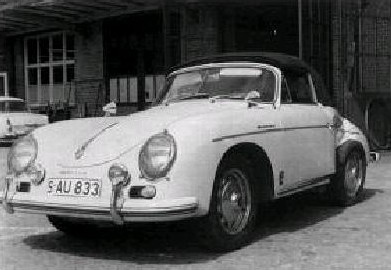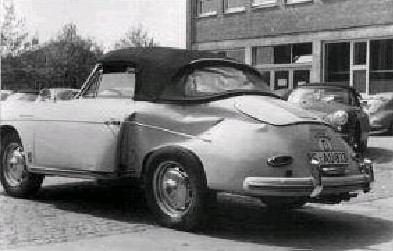Deep within the recesses of Porsche’s Kardex system lies a card that holds the long kept secrets of an interesting vehicle. What I like to call the “356A and a half speedster” is a Porsche that, perhaps, should never have been built. Given the confusing chassis number of 1021, this mystery 356 is of great interest to the “academics” among the Porsche fold.

There has long been an argument as to the quantity of Abarth GTL models produced, with one side arguing 20 were made, and the other shouting 21. GTL chassis delivered to Abarth for re-body and performance enhancement were not subject to the standard crash tests of the time and as such had to apply for a special single car exemption. As a result, they couldn’t receive a normal series production chassis number. Porsche’s delivery records show 20 chassis being delivered, numbered 1001 through 1020.
So What is Chassis 1021?
The card shows original delivery of this disputed Porsche was taken by Folker Rieflin, a young engineer who worked for Porsche for a number of years in the engine department. His fluency with building the heart that beats within a Porsche did not go unnoticed. He was soon promoted to hand assemble the legendary Carrera Twin Cam engines, the same Twin Cam engines found in GTL chassis 1001 through 1020.
Mr. Rieflin’s father had been a long time Porsche enthusiast, and by 1960 he was looking for a new one. Looking at new-to-market early 356B T5 bodied cars, he wasn’t really happy with the detail changes from the last of the 356A models. When requesting a new 356A Cabriolet, Rieflin senior quickly realized not a single one remained available for him to buy. Becoming disconcerted, he asked his son to look around the factory to see what he could find. As luck would have it, Rieflin junior found a 356A cabriolet for his father, however it is was only a “body in white” (a term that signifies a body that has never been built into a car).

In 1960, Rieflin junior purchased the A body on his father’s behalf, and requested the car be built from the ground up in the racing department with several special one-off options. A 356B drive-train was installed, complete with the new Super 90 engine and the car was painted in heron gray. Full leather, sport tires, fog lights, electric clock, twin arm rest, twin headrest, mirrored sunvisor, chrome side spear flourish, headlight stone grilles, a pair of exterior Talbot-style mirrors, and a deluxe horn trim ring were all installed. The strangest option, though, is the “Speedster” script on either front fender of this cabriolet.
This amalgamation of a car, obviously, was not certified for serial number production. This Porsche was finished around the same time that the 20 other chassis were delivered to Abarth, and Porsche simply applied for the same style of exemption for this car, adding a 21st chassis to the bill. The unique A/B cabriolet chassis with a Super 90 engine received chassis number 1021.
Where is 1021 Now?
Fewer than 2 years later, Rieflin senior would suffer a severe accident in the car, buckling the rear quarter panel and caving the wheel housing. Eager to get his car back on the road, he had the car delivered to the Porsche repair shop known as “Werk 1”. Rieflin deemed the repair quote too steep for his taste, and ended up selling the car to one of the body shop employees. The Porsche was then reportedly repaired and sold again. From there, the trail has, unfortunately, gone cold. Nobody has seen or heard from 1021 since 1962, and it seems unlikely to surface any time soon.
Other Porsche Blog Posts You’ll Enjoy
What is It About the Porsche 356?
When Porsches Were “Made by Hand”
1955 Porsche 356 A `Silver Bullet` Custom Hot Rod